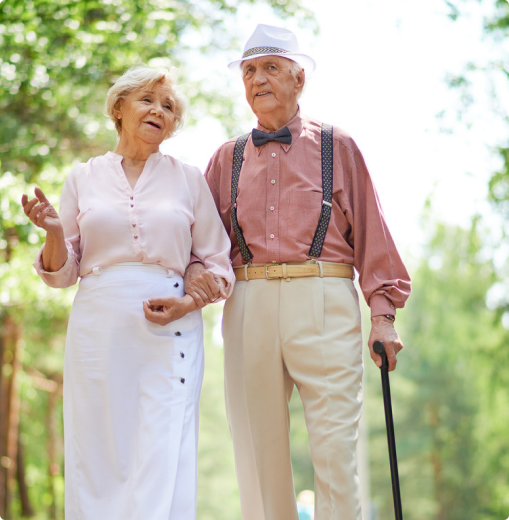
Preventing Slips and Falls for Seniors
Older adults have the highest risk of falling and becoming seriously injured as a result of falling. The CDC reports that falls are the leading cause of injury and injury-related death in adults ages 65 and older.
More than one in four adults over 65 falls every year. According to the CDC, falling once doubles the risk of falling again. Falling can have serious consequences for older people. Approximately one of every five falls leads to injury. Every year, 800,000 people in the United States are hospitalized because of an injury from a fall. Most of these injuries are broken hips and head injuries.
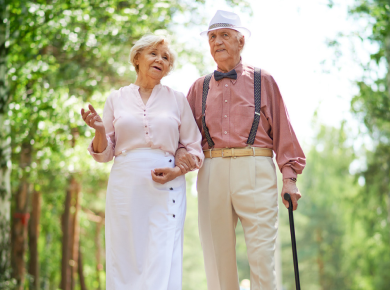
What Causes Falls in Older Adults?
Many health conditions commonly associated with senior citizens increase the risk of falling.
Reduced Physical Activity
You become less active as you age due to health challenges, aches and pains, and fatigue. Reduced activity can lead to muscle wasting, osteoporosis, and Type 2 diabetes. All of these conditions further increase the risk of falling.
Muscle wasting involves the gradual loss of muscle tone. When you lose muscle in your legs and feet, you could experience balance problems as the muscles needed for balance weaken. As you age, your reflexes start to slow down. Combined with weakened muscles, this can make it more difficult to catch yourself when you trip or lose your balance.
Osteoporosis is a loss of bone mass. As bone density decreases, the way you walk may change, reducing balance. It also increases the risk of broken bones from falls.

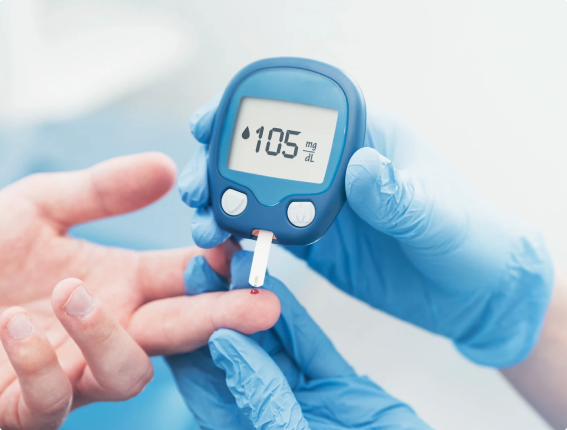
Type 2 Diabetes Mellitus
Type 2 Diabetes Mellitus is a metabolic disorder that allows too much sugar to remain in the blood. A study published in GMC Geriatrics found that insulin dependence in older diabetics was associated with a higher risk of falls. The complications of diabetes lead to physical changes that can increase the risk of falling, including the following:
- Diabetic retinopathy – a condition that causes vision impairment and blindness.
- Peripheral neuropathy – a condition that causes a loss of sensation in the hands, feet, arms, and legs.
- Hypoglycemia – a sharp decline in blood sugar that can reduce cognitive function and lead to loss of consciousness.
Fear of Falling
Older adults often develop a fear of falling after a fall. This fear might cause you to avoid physical activities and social events. This response is understandable because falls are more likely to occur while walking or engaging in physical activity.
However, abstaining from too many activities can further weaken your muscles and bones, increasing the risk of another fall. Avoiding social activities can lead to feelings of isolation, loneliness, and disconnectedness, which may increase the risk of falling by up to 33 percent.
Depression
A Chinese study found a strong association between falls and the following four depressive symptoms in adults over the age of 45:
- Difficulty concentrating
- Sadness
- Feelings that everything is “an effort”
- Disturbed sleep
These symptoms can affect how well you think, concentrate, and function. You may walk differently and have trouble balancing due to being exhausted. Keeping your home clean and free of fall hazards may require more effort than you can muster when you are experiencing depression.
Vision Impairment
Age-related conditions like glaucoma, macular degeneration, and cataracts can prevent you from spotting trip hazards or even subtle changes in your walking path, leading to falls. According to the CDC, impaired vision more than doubles the risk of falls. In many cases, seniors with age-related vision impairment typically have comorbidities that contribute to the risk of falling, such as diabetes or arthritis.
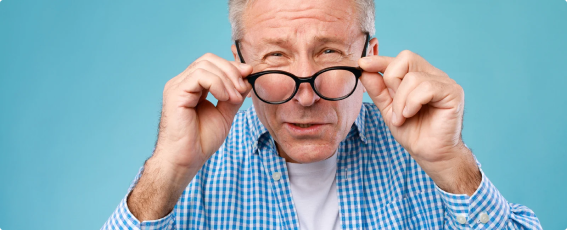
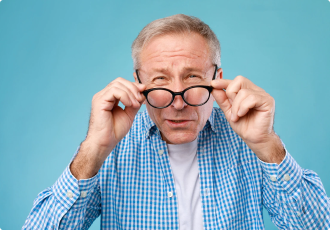
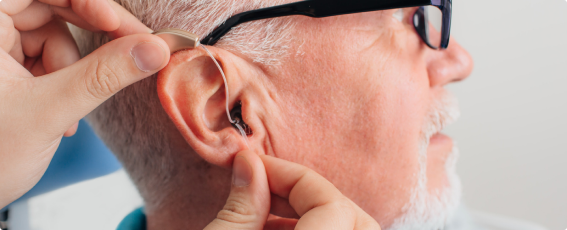

Hearing Loss
Hearing loss triples the risk of falling, although the reasons are not completely known. Some conditions that affect the inner ear, which controls balance, might also cause hearing loss. In other cases, researchers speculate that hearing loss creates an added burden for the brain. Hearing loss may also decrease your ability to understand your body’s position in relation to your environment.
Arthritis
Arthritis is a leading cause of chronic pain, disability, and limitations in older adults. It affected 21.2 percent of adults in the United States from 2019 to 2021. Arthritis causes inflammation and damage to the joints. If you have arthritis in the hips, knees, or ankles, the pain may force you to limp or change your walking style. This can weaken your muscles and throw you off balance, increasing the risk of falling. Arthritis is also one of the most common reasons doctors prescribe medications that increase the fall risk.
Medications
Certain medications commonly prescribed to older adults can cause dizziness, drowsiness, slower reaction times, and a lower level of alertness. These effects increase the risk of falling. The following over-the-counter and prescription medications can cause them:
- Tranquilizers
- Sedatives
- Antidepressants
- Antipsychotics
- Anticonvulsants
- Benzodiazepines
- Opioids
- Muscle relaxants
- Blood pressure medication
- Antihistamines
Fall-Proofing Your Home Checklist
Most older adult falls happen at home. When you live alone, falling can be a traumatic experience, and you may have difficulty getting the help you need. Many of the everyday comforts of home can be health hazards when you are already at risk of falling. The checklist below provides simple strategies you can use to prevent falls in your home.
Bathroom
- Use a nightlight after dark.
- Place non-slip mats or tape in areas that get wet.
- Secure the non-slip mats with two-sided tape.
- Do not install mats in the bathtub or shower.
- Use a shower chair for bathing and showering.
- Install grab bars in the shower and near the toilet.
- If you are in a wheelchair, use a transfer chair to shower.
Kitchen
- Store dishes you use often in easy-to-reach areas.
- Avoid tall barstools in dining areas.
Bedroom
- Make sure the path from your bed to the bathroom is clear.
- Keep a working lamp next to your bed.
- Keep a flashlight near your bed and use it if you get up during the night.
- Keep a phone near your bed in case of emergencies.
All living areas
- Use bright lighting throughout your home.
- Keep walkways clear of cords and clutter.
- Eliminate throw rugs, especially small ones.
- Tape down any rugs you cannot eliminate.
- Promptly clean up leaks and spills.
- Make sure floors are dry before walking on them.
- Avoid using floor wax that creates slippery floors.
- Wear shoes or non-slip slippers.
- Avoid going barefoot or wearing socks.
- Use furniture at a height you can easily access.
- Run electrical cords along walls instead of open areas.
- Use a lift chair if you have difficulty sitting or standing.
- Be aware of where your pet is at all times.
- Use a grabbing tool to reach items rather than extending or using a stepstool.
- Use a walker or specially-fitted cane if you have balance problems.
Stairs and steps
- Install handrails on both sides of stairways.
- Repair uneven or broken steps.
- Install non-stick material on stairs.
- Promptly replace burned-out bulbs over stairs.
Outdoors
- Never go outside barefooted.
- Install non-slip tape on outdoor steps.
- Install handrails on either side of outdoor steps.
- Have tree limbs and yard debris removed from walkways.
- Stick to sidewalks and walking trails.
- Avoid walking in areas with uneven ground.
- Have sidewalks repaired if they become damaged.
- Never walk on snowy or icy pavement.
- Turn on your porch light if you will be out after dark.
- Use motion detector lights or other lighting between your car and your house.
- If you have a dog, find someone else to help you walk it.

Best Footwear To Prevent Slips and Falls
Footwear designed to improve balance and provide extra support can reduce your risk of falls.
Choose footwear that provides a snug fit that you can tighten with shoelaces or Velcro. The shoes should hug your feet comfortably without leaving space for your feet to move inside. Avoid open-heeled shoes and shoes that are too flexible. Hard, stiff shoes provide superior stability and reduce the risk of twisting your ankle. Choose shoes with a lightweight design to reduce difficulty lifting your feet while walking.
Choose wide, flat-heeled shoes. The more of the outsole that touches the ground, the easier it will be to maintain your balance. Only wear shoes with a non-slip tread. If the soles are too smooth, you could slip easily. If they have too much tread, you could stumble easily. Rubber-soled shoes provide excellent traction, including in the winter.

Shoe Brands Made for Seniors
The following shoes are ideal for seniors who need extra support to prevent falls:
- New Balance 990
- Propét Tasha
- Sketcher’s Women’s Go Walk
- Prophet Men’s Stability X Strap Sneaker
- Hush Puppies Men’s Gil
Lifestyle and Wellness Tips for Preventing Falls
While the risk of falling cannot be completely eliminated, maintaining a healthy, active lifestyle can significantly reduce it.
Get Enough Exercise
The most important fall prevention tip is to stay active as much as your body will allow. Weight-bearing activities help maintain bone mass and protect your joints. In addition, many exercises can help you improve your balance.
According to the Arthritis Foundation, exercise increases joint lubrication, promotes circulation, reduces inflammation, and strengthens the muscles around the joints. Strong muscles around the joints and adjoining bones reduce the strain on joints during everyday movements, making it easier to avoid falling.
Focus on exercises that strengthen the muscles in your legs and improve balance. According to the National Council on Aging, walking is a great exercise but won’t strengthen your leg muscles unless you walk uphill or on stairs.
Before starting any exercise program, consult with your doctor to ensure your chosen mode of exercise is safe for your body. Consider consulting with a personal trainer to ensure you maintain proper form. Improper form can lead to injuries.
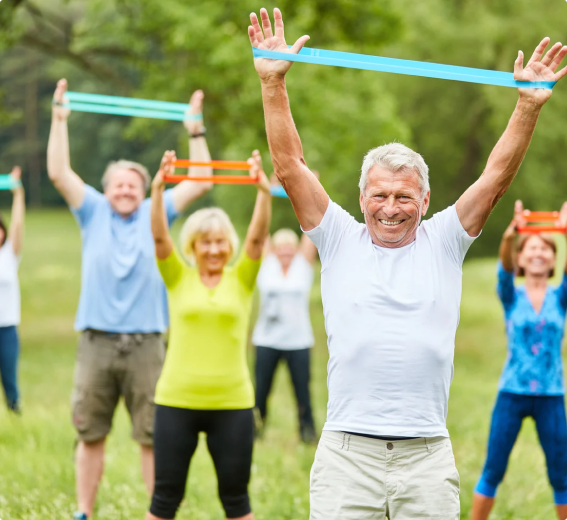
Strength-Building Exercises
- Sit-to-stand chair exercises: Sit down in a chair and slowly stand up. Repeat. Use a chair with armrests.
- Standing heel raises: Stand up straight, using the back of a chair for support. Raise up onto your toes, lower back down, and repeat.
- Lunges: Stand up straight. Move your right leg forward, bending your knee at a right angle. Your left knee should move straight down toward the floor without moving inward. Have a table or countertop beside you for support.
Exercises for Balance
- Stand on one foot: Hold onto a stable surface, such as the back of a chair, raise one foot, and hold the stance. Let go of the surface when you feel steady, and hold the position as long as possible. Grab back onto the surface when you start to feel unsteady. Repeat on the other side.
- Side-Stepping: With your hands on a table or counter in front of you, stand up straight and take sideways steps from one end of the counter to the other. Touch the tabletop as needed for balance. Repeat in the opposite direction.
- Walk backward: Using a hallway or table for support, practice walking backward.
Tai Chi
Tai Chi provides strength and balance benefits. Numerous studies have confirmed that it is effective in reducing the risk of falls in older adults. Tai Chi exercises improve balance through a series of movements that require you to control your posture, rotate your trunk, and transfer your weight. These movements provide some strength training and improve your center of gravity.
The longer you practice Tai Chi, the greater the benefits. Overall, the long-term benefits of Tai Chi include improved balance while standing still and during movements like walking.
Consume a Healthy Diet
A study published in the Journal of Aging and Health identified a strong association between malnutrition and fall risk. Malnutrition can lead to sarcopenia, a progressive loss of muscle mass. This condition can increase joint inflammation and weakness, increasing the risk of falling and injury from a fall. Malnutrition can also increase the following risk factors for falls:
- Dizziness
- Fainting spells
- Depression
- Reduced alertness
- Lower cognition
Malnutrition isn’t just a lack of food. It can also occur as poor dietary choices. If you consume excess sugar, you increase the risk of developing diabetes. Eating too little protein can contribute to the risk of osteoporosis. Consuming too much of the wrong foods and not enough of the right foods can also increase fatigue, resulting in a tendency to fall.
A healthy diet for seniors includes the following:
- A variety of foods from all of the food groups
- Foods low in sugar, saturated fats, and sodium
- A variety of protein foods, such as meats, dairy products, and beans
- Healthy fats
- Foods fortified with Vitamin B12
Drink Plenty of Fluids
Dehydration can lead to light-headedness, reduced blood pressure, fatigue, confusion, and kidney problems, all of which can increase your risk of falls. Your body needs water and electrolytes to stay hydrated. Electrolytes are minerals like potassium and calcium.
Most older adults can prevent dehydration by consuming regular meals and drinking at least 72 ounces of water daily. Avoid diuretics like alcohol and caffeine, as they can increase dehydration. Talk to your doctor about the amount of fluids you should consume. Too much water consumption can be dangerous for people with certain health conditions.

Am I at Risk of Falling?
You may be at an increased risk of falling if you are frail, take medication, or have health conditions that cause pain, weakness, weight changes, or sleep disturbances. The number one risk factor for falling is a history of falling. You may also have a heightened risk of falling if you have any of the following conditions:
- Muscle weakness
- An abnormal gait pattern
- Foot, knee, or back pain
- Weigh loss or gain
- Sleep disturbances
- A recent injury
- Inner ear problems
- Impaired vision
- Dementia
- Vitamin D Deficiency
- Osteoporosis
- Arthritis
- Parkinson’s Disease
- Balance problems
- Hearing loss
- Depression
- Prescribed medications
What Is Frailty?
Frailty is an age-related decline that typically includes significant weight loss and muscle wasting within a short period. Frail adults are more likely to experience severe effects from minor illnesses and need hospitalization from minor accidents more often. They have a high risk of falling and a high risk of breaking a bone or suffering another serious injury from a fall.
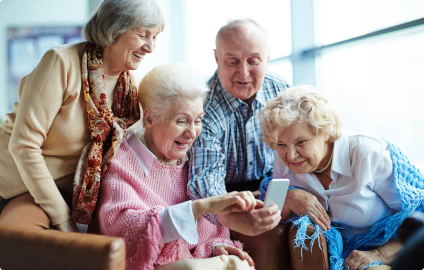
What to Do if You Fall
If you have a slip and fall accident in a public place, slowly assess whether you are injured. This could take a few minutes. Let bystanders call 911 and consider going to the hospital to determine whether you have broken any bones. If you are confident you are not hurt, you can allow paramedics to help you up.
Getting help could be more complicated if you fall at home, especially if you live alone. If you have a spouse, partner, or caregiver in the home, call out for help. If the person isn’t trained in proper techniques to help you up, call 911, even if you don’t believe you are hurt. If an untrained person tries to help you up, they could injure themselves or make your injuries worse.
If you think you can get up and are confident you aren’t hurt, slowly turn onto your hands and knees. Your caregiver may be able to provide a stable piece of furniture to use as a brace to get yourself up. Alternatively, you could crawl to a stable piece of furniture and use it to help yourself up.
What to Do If You Fall While You Are Home Alone
Knowing what to do when you fall at home alone could save your life. You could be stuck without help for hours or days if you cannot reach a phone. If you find yourself in this position, find a way to access help. If you live in an apartment building, you can try calling out for help. If no one hears you or you live in an isolated area, find a way to get to a phone.
Normally, you wouldn’t want to move when you are hurt because it could worsen an injury, but getting help is the priority. Try to roll onto your side and maneuver however you can to the nearest phone or your front door. If you fall in a shower or bathtub, this may be harder. However, do whatever you can to get help. If you have no other options, keep calling out for help until someone responds. Try to stay hydrated and move around as much as possible to prevent hypothermia while you wait.
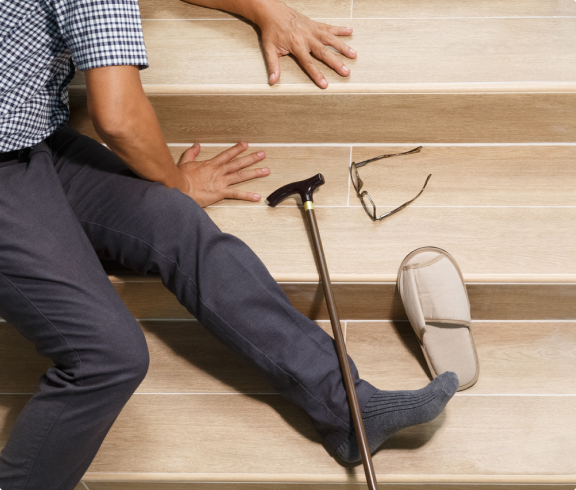
Prepare Ahead of Time for a Fall at Home
Several medical devices and software programs are available to seniors at risk of falling to ensure you never lose access to a way to call for help. You can wear these devices on your wrist or around your neck. In the event of a fall, you can push a button to dispatch help. Some devices also offer an option that automatically detects falls and dispatches help. This feature can be life-saving when a fall renders you unconscious.
Some smartphones and smartwatches also have fall detection apps, but they haven’t been tested as rigorously as the specialty devices made for this purpose. In addition, the smartphone app only works if you have your phone with you. Below are a few examples of the companies that offer these life-saving devices:
These products require a paid subscription, but some insurance programs may cover them. They also require either a cell phone or a landline.
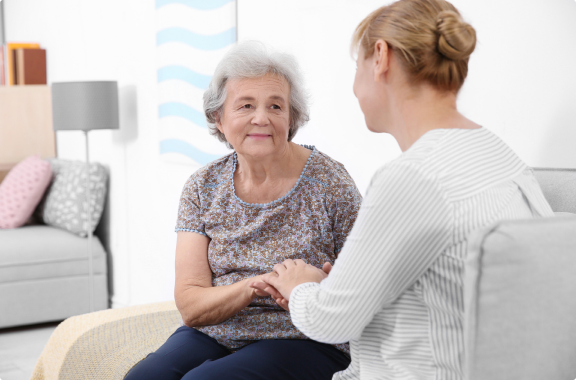
What to Do If You Are a Caregiver and Someone Falls in Front of You
If you are caring for someone who falls, it is important to allow a qualified medical team to evaluate them before moving them. Rather than helping them up yourself, call 911 and allow the paramedics to evaluate them and help them up. Paramedics have training in proper lifting techniques. Do what you can to make them comfortable, stay calm, and offer comfort measures such as a pillow, blanket, and fluids until help arrives.


